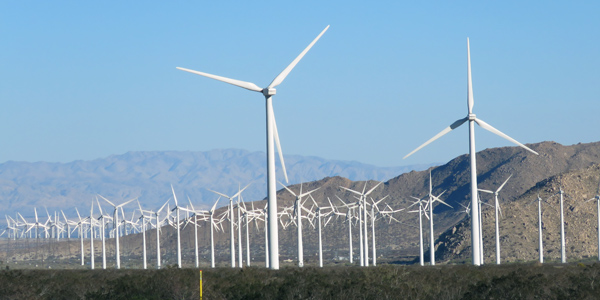By Amanda Durish Cook
FERC on Thursday largely approved the Order 845 compliance filings for CAISO, NYISO and a handful of utilities, though none of the entities received perfect marks.
The commission said the companies and grid operators mostly adopted its pro forma large generator interconnection procedures but fell short of adopting all language required under Order 845.
FERC issued Orders 845 and 845-A in 2018 and 2019, respectively, to increase the transparency and speed of generator interconnection processes. (See ‘Boring Good’ Rulemaking Seeks to Clean up Order 845.)
The commission directed the two grid operators and five utilities to make additional changes to their filings, focusing on contingent facilities, provisional interconnection service, generators’ technological advancements and surplus interconnection service. The entities have 60 days to address the shortcomings.
In addition to CAISO’s (ER19-1950) and NYISO’s (ER19-1949) partial compliance, FERC found partial compliance from Arizona Public Service (ER19-1939), Cube Yadkin Transmission (ER19-1956), Deseret Power (ER19-1902-001), El Paso Electric (ER19-1953) and LG&E and KU (ER19-1916).
Contingent Facilities
In a familiar line, the commission said the entities’ proposals “lack the requisite transparency … because the proposed tariff revisions do not detail the specific technical screens or analyses and the specific thresholds or criteria that [they] will use as part of its method to identify contingent facilities” — unbuilt interconnection facilities and network upgrades on which the interconnection request’s costs, timing and study findings are dependent.
“Without this information, an interconnection customer will not understand how [they] will evaluate potential contingent facilities to determine their relationship to an individual interconnection request,” FERC said in nearly all the orders, adding that such criteria will ensure that interconnection customers are treated equally.
Contingent facility descriptions presented a challenge in an earlier round of 845 approvals. (See FERC Finds Partial Compliance on Order 845.)
Surplus Service
Revisions related to surplus interconnection service were also a stumbling block for many of the entities.
FERC said CAISO and Deseret failed to include tariff revisions that explicitly require that the transmission provider, original interconnection customer and surplus interconnection service customer file a surplus interconnection service agreement with the commission that outlines the terms and conditions of the service.
The commission directed LG&E/KU to remove a provision that it will not allow surplus interconnection service if the system impact study identifies a need for new interconnection facilities or network upgrades. FERC said while Order 845 does restrict surplus service when network upgrades are needed, it does not “restrict the construction of new interconnection facilities necessary to accommodate surplus interconnection service.”
El Paso Electric must also revise its tariff to explicitly state that surplus interconnection service requests will be processed outside the non-surplus interconnection queue.
Cube Yadkin’s surplus interconnection service provisions also missed the mark, FERC said. The subsidiary of North Carolina hydroelectric company Cube Carolina proposed that “any change made to the existing interconnection service will be treated as a new interconnection request.” FERC said that while Order 845 allows a transmission provider to deny surplus interconnection service if it requires network upgrades, it’s “not for the reasons that Cube Yadkin proposes.”
CAISO
CAISO has the most alterations ahead of it to fully comply with Order 845.
FERC said the ISO’s existing limited operation study — used when an interconnection customer requests service below its full generating facility capacity — missed the aims of Order 845 because the study places restrictions on when a customer may request provisional interconnection service. The limited operation study can only be performed when a transmission owner’s interconnection facilities or network upgrades “are not reasonably expected to be completed” before the generator’s commercial operation date, according to CAISO.
The ISO also must research its Tariff to find evidence that area delivery network upgrades can be cost-capped in the same manner as reliability network upgrades and local delivery network upgrades. FERC said it couldn’t accept some of CAISO’s Tariff language without proof that the practice was already in place. The ISO had said costs for area delivery network upgrades above caps identified in interconnection studies must be financed by the TO.
CAISO also went off-script in its pro forma large generator interconnection procedures when it proposed potential penalties for generators that exceed their level of interconnection service capacity. The commission explicitly decided against penalties for over-generation in Order 845, FERC said, adding that the ISO must make a separate filing to propose over-generation penalties.
Technological Advancements and Provisional Service
FERC also said that CAISO, Cube Yadkin and Deseret failed to mention their requisite 30-day deadline to determine whether a proposed technological advancement to a generation project amounts to a material modification. Additionally, the commission said APS and LG&E/KU didn’t describe studies used to determine whether generators’ technological advancement requests constitute material modifications.
Spotty language around provisional interconnection service was also an impediment to full Order 845 compliance for NYISO and El Paso Electric.
FERC said the ISO’s pro forma large generator interconnection agreement should specify the “frequency with which NYISO will study and update the maximum output of a generating facility” with provisional interconnection service.
The commission also said El Paso Electric’s pledge to update its provisional interconnection studies “whenever changes experienced or projected to occur on the system warrant re-evaluation of the maximum permissible output” was too vague.





